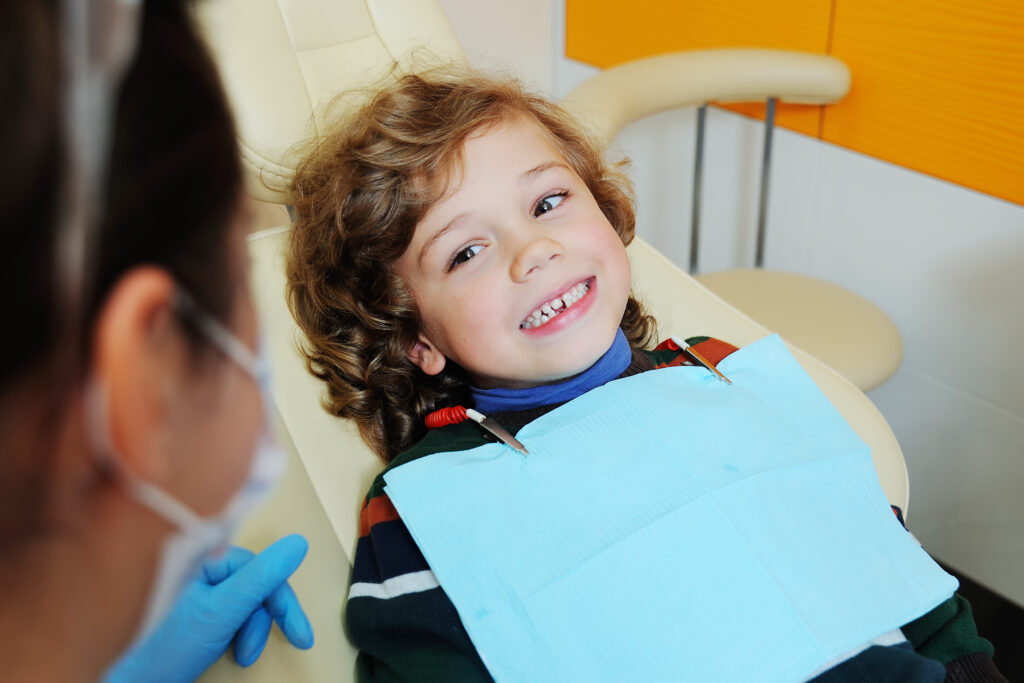Orthodontics for Children: Developing a Healthy Smile
Are you considering orthodontic treatment for your child? The American Association of Orthodontists (AAO) can guide you through the orthodontic process and connect you with an experienced, trusted doctor for your child. Find an orthodontist in your area today.

Your Guide to Child Orthodontics
To bite and chew properly, you need teeth that work together, making orthodontic treatment a critical part of your child’s oral health care. Orthodontic treatment not only gives your child a beautiful smile; it sets the stage for a lifetime of healthy teeth.

The Importance of Early Check-Ups
AAO experts recommend children complete their first check-up with an orthodontist by age 7. Around this age, children have a mix of baby (primary) and permanent teeth, and examining them gives your child’s orthodontist a wealth of information. If a problem exists, or if one is developing, your orthodontist can advise you on the recommended treatment, when it should begin, and how long it should take.
If your child is younger than 7 and you notice something that appears “off,” you don’t need to wait until your child turns 7 to see an orthodontist. Regardless of age, you should take your child to an orthodontist the moment you notice an issue.
Signs Your Child May Need Orthodontic Care
To determine if your child needs to see an orthodontist watch for these warning signs:
Early or Late Loss of Baby Teeth
While some variation is normal, losing baby teeth too early or too late can create problems with the permanent teeth replacing them. An orthodontist is an expert in recognizing and treating adverse variations.
Difficulty Chewing or Biting
Eating should never hurt. Although discomfort is typical when “teething,” painful chewing may indicate orthodontic problems that need to be addressed.
Mouth Breathing
Many orthodontic problems can develop as a result of mouth breathing. Your child’s orthodontist can address and correct these issues.
Jaws Shifting or Clicking
Shifting of the lower jaw due to a bite problem can lead to jaw pain and other dental consequences. Orthodontists are experts in evaluating how teeth come together and can ensure your child’s jaws are aligned correctly.
Cheek Biting
With a normal bite, the outer cusps of the upper teeth hold the cheeks away from the lower chewing surfaces. If your child is constantly biting their cheeks, they may have a condition where the upper and lower teeth are not coming or fitting together properly when chewing.
Facial Imbalance
The underlying teeth and jaws may affect the appearance of the lips, chin, and other facial features. If your child’s jaw is misaligned, an imbalance can impact their face shape and appearance. An orthodontist can expertly align your child’s jaw to avoid this imbalance and prevent future health issues.

Your Child’s First Orthodontic Exam
As previously mentioned, AAO recommends that children first visit an orthodontist no later than age 7. The mix of baby and permanent teeth present at this age allows the orthodontist to recognize orthodontic problems (“malocclusions”) even in their earliest stages.
Five essential questions are generally covered during the first exam:
- Is there an orthodontic problem, and if so, what is it?
- What are the available treatment options?
- How long is the recommended treatment expected to take?
- How much will the recommended treatment cost?
Orthodontic Treatment Options for Children
-
Braces
Composed of brackets that are affixed to teeth and wires that are threaded through slots in the brackets.
-
Aligners
Clear, thin, plastic-like trays that are formed to fit an individual’s teeth. Patients are responsible for insertion and removal.
-
Retainers
Removable, clear, thin, slightly flexible, and made of a plastic-like material. They fit the exact shape and placement of the teeth.
-
Elastics
Elastics are tiny rubber bands that apply extra force to a tooth or teeth in ways that braces alone cannot. This helps teeth move into their ideal positions.
-
Mouthguards
A mouth guard is used by athletes of all ages to protect teeth from trauma during competitive and individual sporting activities.
-
Orthodontic Surgery
Surgical orthodontics, also called orthognathic surgery, is corrective jaw surgery performed to remedy skeletal problems that affect the ability to bite, chew and speak.
-
Gifted Smiles
Gifted Smiles is a program of the American Association of Orthodontists Foundation (AAOF) that provides necessary orthodontic treatments to children of families who lack access to care.
Common Questions About Orthodontics for Children
For more information about child orthodontics, explore frequently asked questions by parents like you. If you can’t find an answer to your question, contact a local AAO orthodontist – our experts can provide any additional information you need.


